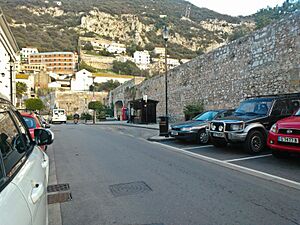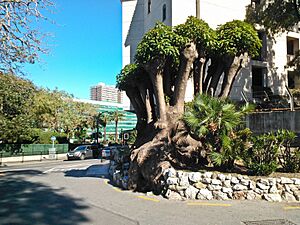Operation Flavius facts for kids
Quick facts for kids Operation Flavius |
|
|---|---|
| Part of the Troubles | |
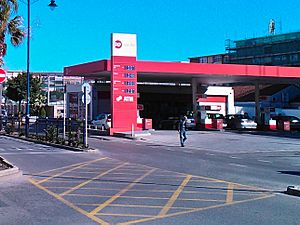
Petrol station on Winston Churchill Avenue in Gibraltar, where McCann and Farrell were shot, pictured in 2014
|
|
| Type | Shooting |
| Location | Gibraltar 36°08′48″N 5°21′01″W / 36.1467°N 5.3503°W |
| Date | 6 March 1988 |
Operation Flavius, also known as the Gibraltar killings, was a military operation that happened on March 6, 1988. Three members of the Provisional Irish Republican Army (IRA) were shot and killed by the British Special Air Service (SAS) in Gibraltar. The British authorities believed these three people were planning a car bomb attack on British soldiers in Gibraltar.
The IRA members were shot as they were leaving Gibraltar, after parking a car. It turned out that all three were unarmed, and no bomb was found in their car. This led to accusations that the British government had planned to kill them. An investigation in Gibraltar decided that the authorities had acted legally. However, the European Court of Human Rights later ruled that, while there was no conspiracy to murder, the way the operation was planned and controlled was so flawed that it made the use of deadly force almost certain. These deaths were the start of a series of violent events over two weeks.
In late 1987, British authorities learned that the IRA was planning a bomb attack in Gibraltar. On the day of the shootings, an IRA member named Seán Savage was seen parking a car near a parade area. Two other members, Daniel McCann and Mairéad Farrell, were seen crossing the border shortly after. As SAS soldiers moved to stop them, Savage ran off. Soldiers then shot McCann and Farrell, and other soldiers shot Savage. The soldiers said the IRA members made threatening movements. All three were found to be unarmed. Savage's car did not have a bomb, but a second car with explosives was later found in Spain.
Two months after the shootings, a TV show called "Death on the Rock" suggested that the three IRA members might have been killed unlawfully. An official investigation (called an inquest) started in September 1988. The authorities said the IRA team had been tracked to Málaga but then lost by Spanish police. The soldiers said they believed the suspects were reaching for weapons or a remote control to set off a bomb. Some eyewitnesses said they saw the three shot without warning, with their hands up, or while they were on the ground. The inquest decided the killings were lawful. The families then took the case to the European Court of Human Rights. In 1995, the court ruled that the operation violated human rights because the authorities failed to arrest the suspects earlier, which made the use of deadly force almost unavoidable.
Contents
Understanding the Background
The Provisional Irish Republican Army (IRA) was a group that wanted to create a united Ireland and end British rule in Northern Ireland. They used force to try and achieve this. The IRA attacked civilians, soldiers, police, and other targets in Northern Ireland and England. Daniel McCann, Seán Savage, and Mairéad Farrell were important members of the IRA. Savage was an expert with explosives, and McCann was a high-ranking intelligence officer. Both McCann and Farrell had been in prison before for crimes related to explosives.
The Special Air Service (SAS) is a special forces unit of the United Kingdom's army. The SAS was sent to Northern Ireland to carry out secret, intelligence-based operations against the IRA. They used more aggressive tactics than regular police or army units.
Planning the Operation
In late 1987, British authorities found out that the IRA was planning an attack in Gibraltar. In November 1987, several known IRA members were seen traveling from Belfast to Spain using fake identities. British intelligence (MI5) and Spanish authorities began watching an IRA unit operating from the Costa del Sol. After an IRA member was seen at a guard changing ceremony at the Convent (the governor's home) in Gibraltar, authorities thought the IRA might be planning to attack soldiers with a car bomb during the ceremony. To check this, the Gibraltar government stopped the ceremony in December 1987. Their suspicions seemed correct when the IRA member appeared again at the ceremony in February 1988.
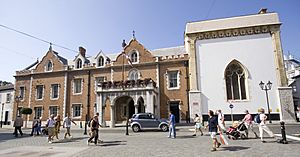
In the weeks that followed, Savage, McCann, and Farrell traveled to Málaga, about 90 miles (145 km) from Gibraltar. They each rented a car. Authorities watched their movements. By early March, British officials were sure an IRA attack was coming. A team from the SAS was sent to Gibraltar. The plan was for the SAS to help the Gibraltar Police arrest the IRA members if they parked a car in Gibraltar and then tried to leave.
Events of March 6
On March 6, 1988, at 12:45 PM, Seán Savage entered Gibraltar in a white Renault 5 car without being noticed at first. An MI5 officer recognized him, and he was followed. He parked the car in a car park used for the guard changing ceremony. At 2:30 PM, McCann and Farrell crossed the border from Spain and were also followed. They met Savage in the car park around 2:50 PM. A few minutes later, the three started walking through the town.
After they left the car park, a bomb-disposal officer (Soldier G) checked Savage's car. He reported that the car should be treated as a possible car bomb. This suspicion was told to four SAS soldiers (Soldiers A, B, C, and D) as if it were a certainty. At 3:40 PM, the Gibraltar Police Commissioner handed control of the operation to the senior SAS officer. Two minutes later, the SAS moved to stop the IRA members as they walked towards the Spanish border.
As the soldiers got closer, the suspects seemed to realize they were being followed. Savage separated from McCann and Farrell and started walking south. Soldiers A and B stayed with McCann and Farrell, while Soldiers C and D followed Savage.
At the same time, the police were getting ready to take the IRA members into custody. A police car, on routine patrol, was told to return to headquarters urgently. This police car got stuck in traffic. The official report says the police car's siren was turned on to get through traffic. This siren apparently startled McCann and Farrell, just as Soldiers A and B were about to challenge them near a petrol station on Winston Churchill Avenue.
Soldier A said at the inquest that Farrell looked back at him and seemed to recognize him. He said he was drawing his pistol to shout a warning, but "events overtook the warning." He said McCann's right arm "moved aggressively," making him believe McCann was reaching for a remote detonator. Soldier A shot McCann once in the back. He then believed Farrell reached for her handbag, possibly for a detonator, and he shot her once in the back. He then shot McCann three more times. Soldier B said he thought the same and shot Farrell twice, then McCann once or twice, then Farrell three more times.
Soldiers C and D said they were moving to arrest Savage, who was about 300 feet (90 meters) south of the petrol station, when they heard gunfire. Soldier C said Savage turned around and reached towards his jacket pocket as C shouted "Stop!" C believed Savage was reaching for a remote detonator and opened fire. C shot Savage six times, and Soldier D fired nine times. All three IRA members died. One of the soldiers' bullets, believed to have gone through Farrell, lightly injured a person nearby.
Right after the shootings, the soldiers put on their berets to show they were military. Gibraltar Police officers arrived almost immediately. At 4:05 PM, the SAS commander gave control back to the Gibraltar Police. Bomb-disposal experts were brought in. Four hours later, authorities announced that a car bomb had been defused. The SAS soldiers left Gibraltar by military plane that same day.
When the bodies were searched, car keys were found on Farrell. Two days later, these keys led authorities to a red Ford Fiesta in a car park in Marbella, about 50 miles (80 km) from Gibraltar. This car contained a large amount of Semtex (an explosive), along with ammunition, detonators, and timers.
Public Reaction
Minutes after the shootings, the British Ministry of Defence said in a press release that "a suspected car bomb has been found in Gibraltar, and three suspects have been shot dead by the civilian police." That evening, news reports said the IRA team had been in a "shootout." The next morning, news reports mentioned the alleged bomb was "packed with bits of metal." All British newspapers reported the alleged car bomb.
The IRA later stated that McCann, Savage, and Farrell were "on active service" in Gibraltar and had "access to and control over 140 lb (64 kg)" of Semtex.
On March 7, the foreign secretary, Sir Geoffrey Howe, told the House of Commons that Savage's car had caused "strong suspicions" of a bomb, but that it had been found not to contain an explosive device. After this, newspapers continued to focus on the IRA's planned attack. Reports of the bomb found in Marbella seemed to support the government's actions. Some members of parliament criticized the operation.
Aftermath and Related Events
The IRA told the families of McCann, Savage, and Farrell about the deaths on the evening of March 6. The next day, they publicly announced that the three were IRA members. The bodies were flown to Dublin on March 14, then driven to Belfast. A large number of police and military vehicles met the procession at the border.
The joint funeral for McCann, Farrell, and Savage took place on March 16 at Milltown Cemetery in Belfast. The police agreed to have a small presence at the funeral. However, a loyalist paramilitary named Michael Stone attacked the mourners with grenades and a pistol, injuring 60 people and killing three. Stone was eventually caught and arrested.
The funeral for Caoimhín Mac Brádaigh (Kevin Brady), one of Stone's victims, was on March 19. As his funeral procession moved, a car driven by two undercover British Army corporals, David Howes and Derek Wood, drove into the procession. A hostile crowd surrounded their car. The corporals were pulled from the car, beaten, and disarmed. They were then taken away by IRA members and shot multiple times. Margaret Thatcher called these killings the "single most horrifying event in Northern Ireland" during her time as prime minister.
The corporals' shootings led to a huge police investigation in Northern Ireland. Many people were arrested and charged.
"Death on the Rock" Documentary
On April 28, 1988, almost two months after the Gibraltar shootings, a TV show called "Death on the Rock" was broadcast. Journalists investigated the shootings in Spain and Gibraltar. They used eyewitness accounts and help from Spanish authorities to recreate the events. In Gibraltar, they found new eyewitnesses who said they saw McCann, Savage, and Farrell shot without warning or after they had fallen.
The documentary also used an explosives expert who believed it would have been clear that Savage's car did not have a bomb. He also thought a remote detonator could not have worked from where the shootings happened to the car park. The government refused to comment before the inquest. The documentary concluded that a judicial inquiry was needed to find the facts.
Two days before the broadcast, Sir Geoffrey Howe asked the Independent Broadcasting Authority (IBA) to delay the show, saying it might affect the inquest. The IBA watched the program and decided to broadcast it as planned.
The program caused a lot of controversy. British newspapers criticized it, calling it a "slur" on the SAS. Over the next few weeks, newspapers printed stories about the documentary's witnesses. One witness, Carmen Proetta, who said she saw McCann and Farrell shot without warning, sued several newspapers for false reporting and won money.
The Inquest
The inquest (an official investigation into a death) into the shootings began on September 6, 1988. The coroner, Felix Pizzarello, led the proceedings, and eleven jurors listened to the evidence. Lawyers represented the Gibraltar government, the SAS soldiers, and the families of McCann, Farrell, and Savage. Inquests investigate how a death happened; they don't assign blame. The jury can decide if a killing was "lawful," "unlawful," or give an "open verdict."
The SAS soldiers and MI5 officers gave their evidence anonymously and from behind a screen. The families' lawyer, Patrick McGrory, felt he was at a disadvantage because the other lawyers had seen the SAS and MI5 evidence beforehand. The inquest heard from 79 witnesses, including police, MI5, SAS soldiers, experts, and eyewitnesses.
Witness Accounts
Gibraltar Police officers and "Mr O," the senior MI5 officer, testified first. "Mr O" said that MI5 believed the IRA might use a remote-controlled bomb in Gibraltar. He also said that Spanish police had lost track of McCann, Savage, and Farrell before they entered Gibraltar.
Police Commissioner Joseph Canepa said there was no conspiracy to kill the three. He said the Gibraltar Police were not equipped to handle the threat, so he asked London for help. He insisted he was in command of the operation, except for the 25 minutes of the military action. He agreed that Savage's arrival in Gibraltar surprised authorities.
"Soldier F," the SAS commander, and "Soldier E," a junior officer, testified next. The SAS soldiers all said they were told the bombers would have a remote detonator and that Savage's car definitely contained a bomb. Each soldier said the IRA team made movements they believed were threatening, which made them open fire.
Several Gibraltar Police officers testified about what happened after the shootings. They said soldiers' shell casings were removed from the scene, and that the Gibraltar Police had lost some evidence. The soldiers did not give statements to the police until more than a week after the shootings.
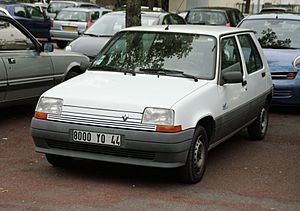
Civilian witnesses also gave evidence. Allen Feraday, a scientific officer, suggested a remote detonator could reach the car park from the shooting scenes. However, he noted the car's aerial wasn't typical for receiving a detonation signal. "Soldier G" later said he wasn't an explosives expert and his assessment of Savage's car was based on its "too new" aerial. Another expert, Dr Michael Scott, disagreed that a bomb could have been detonated from the petrol station.
Professor Alan Watson, a forensic pathologist, examined the bodies. He found difficulties because the bodies had been stripped, and there was no X-ray machine. He concluded that McCann was shot four times, Farrell five times, and Savage possibly eighteen times. Watson suggested the deceased were shot while on the ground. Another pathologist agreed. A forensic scientist, David Pryor, said McCann and Farrell were shot from a distance of no more than two or three feet (0.6 or 0.9 meters), which contradicted the soldiers' statements.
Several eyewitnesses from "Death on the Rock" also appeared. Kenneth Asquez, who had given a statement to the documentary, reluctantly appeared and took back his statements. He claimed he made them up after being pressured. However, he couldn't explain why his original statement included details that were not public before the inquest.
The Verdict
The inquest ended on September 30. The coroner told the jury they could decide if the killing was unlawful if they believed there was a conspiracy by the British government to murder the three. He urged them to reach a clear verdict. By a majority of nine to two, the jury returned a verdict of lawful killing.
After the inquest, a Gibraltar Police document was leaked, showing Inspector Revagliatte was in command of police firearms teams. It also emerged that the IRA team in Spain likely had more members than the three killed. Spanish authorities knew where McCann and Savage were staying and had them under surveillance. A Spanish police officer said they told British authorities they didn't believe the three had a bomb on March 6.
Legal Challenges
In March 1990, the families of McCann, Savage, and Farrell started legal action against the British government in London. The case was dismissed. The families then appealed to the European Commission of Human Rights, arguing that the killings violated Article 2 (the "right to life") of the European Convention on Human Rights (ECHR). The commission criticized the operation but found no violation of Article 2. However, the case was sent to the European Court of Human Rights (ECtHR) for a final decision.
The British government argued the killings were "absolutely necessary" to protect Gibraltar's people. They said the soldiers believed the IRA members could detonate a car bomb remotely. The families claimed the government planned to kill them and that the operation's planning was flawed. The court found that the soldiers' actions were excessive but did not violate Article 2 on their own. However, the court found that the authorities' failure to arrest the suspects earlier, combined with the information given to the soldiers, made the use of deadly force almost certain. Therefore, the court decided there had been a violation of Article 2 in the control of the operation.
The court ordered the British government to pay the families' legal costs for the proceedings in Strasbourg. The government paid these costs on December 24, 1995.
Lasting Impact
Operation Flavius is seen as a very controversial event in Gibraltar's history. It was also a shocking period during "the Troubles." Some people believed the shootings showed that British authorities had a "shoot-to-kill" policy against the IRA.
Maurice Punch, an expert on policing, said the ECtHR verdict was a "landmark case." It meant that commanders, not just the soldiers, were responsible for failures in such operations. He believed it showed that operations meant to arrest suspects should be done by civilian police, not soldiers. This case is important for understanding how Article 2 of the ECHR applies to the use of deadly force by the state.
After the inquest, the Governor of Gibraltar, Air Chief Marshal Sir Peter Terry, said, "Even in this remote place, there is no place for terrorists." Two years later, in September 1990, the IRA attacked Terry's home in Staffordshire, shooting and seriously injuring him and his wife.
Following Kenneth Asquez's retraction of his statement to "Death on the Rock," an independent inquiry was held into the documentary. The report, published in January 1989, criticized some aspects of "Death on the Rock" but found it was made honestly. It concluded that the documentary showed how "freedom of expression can prevail."
Images for kids


